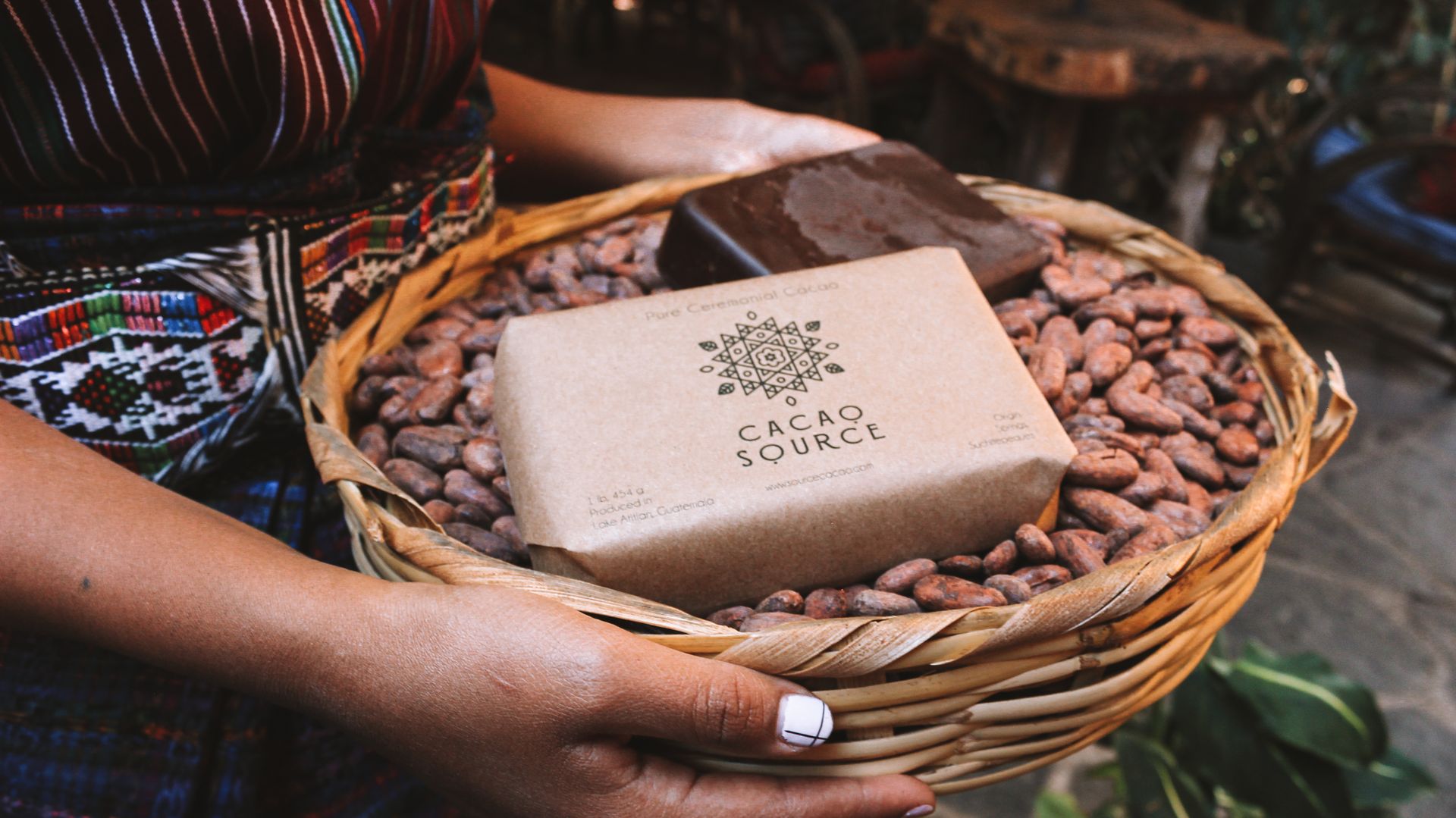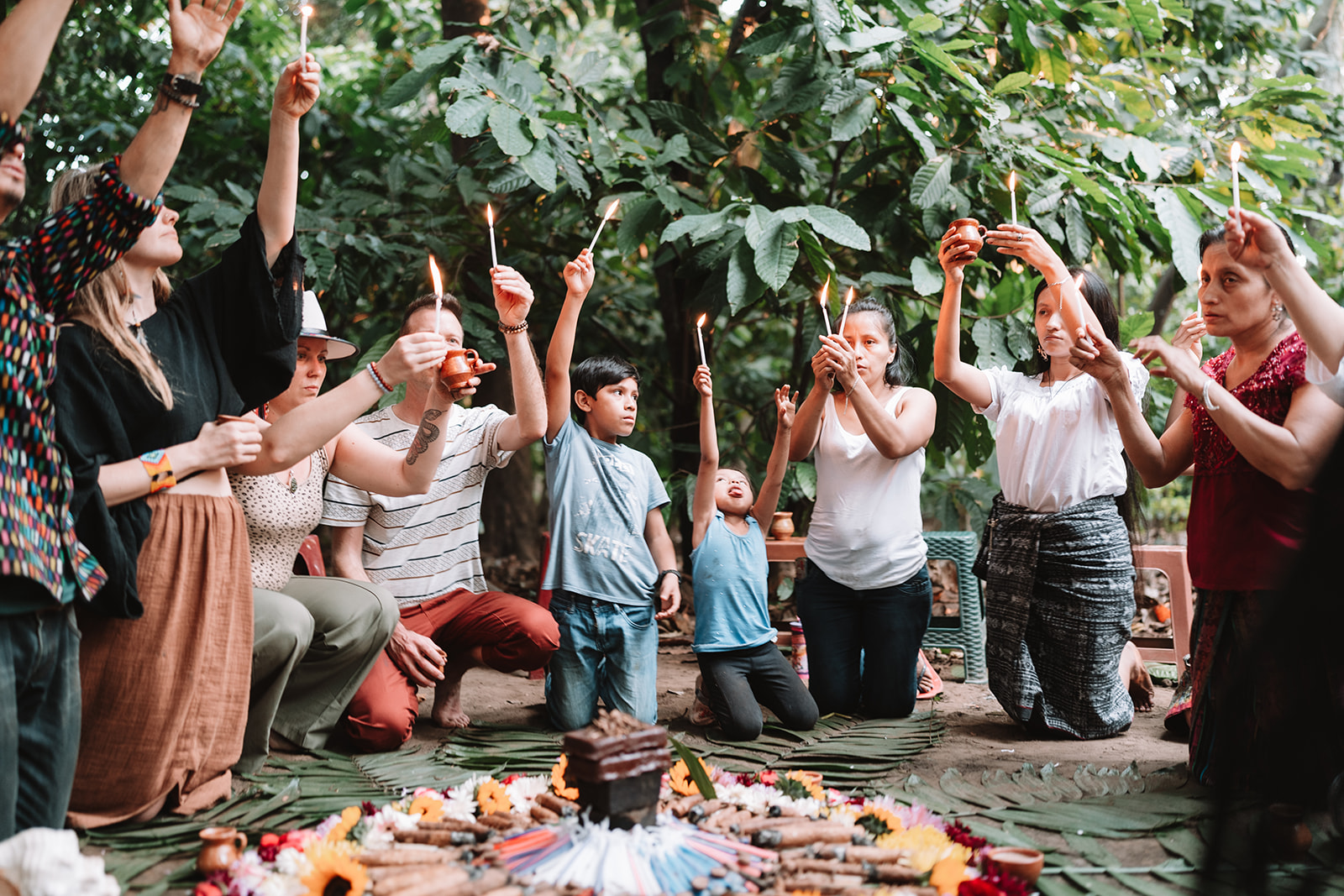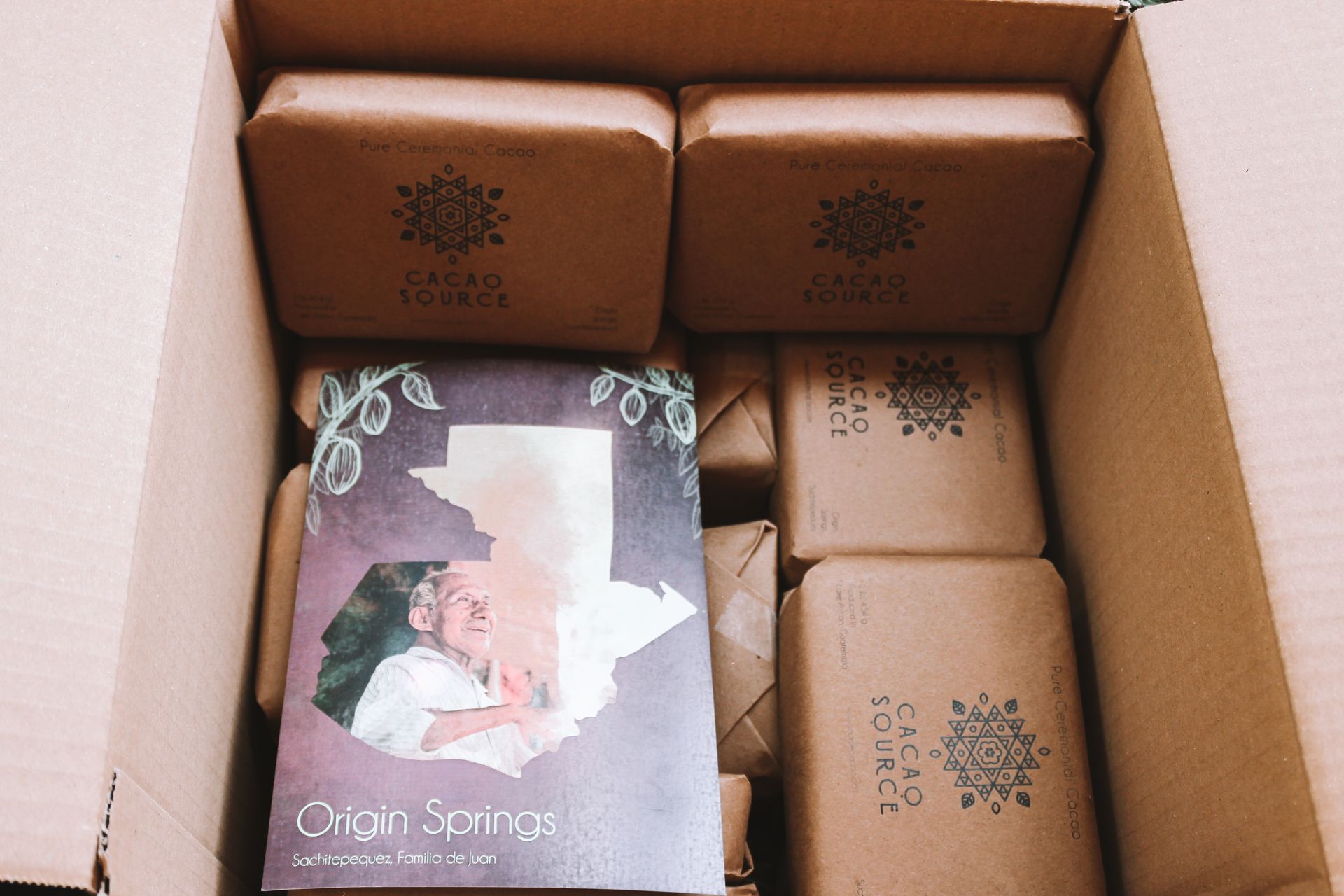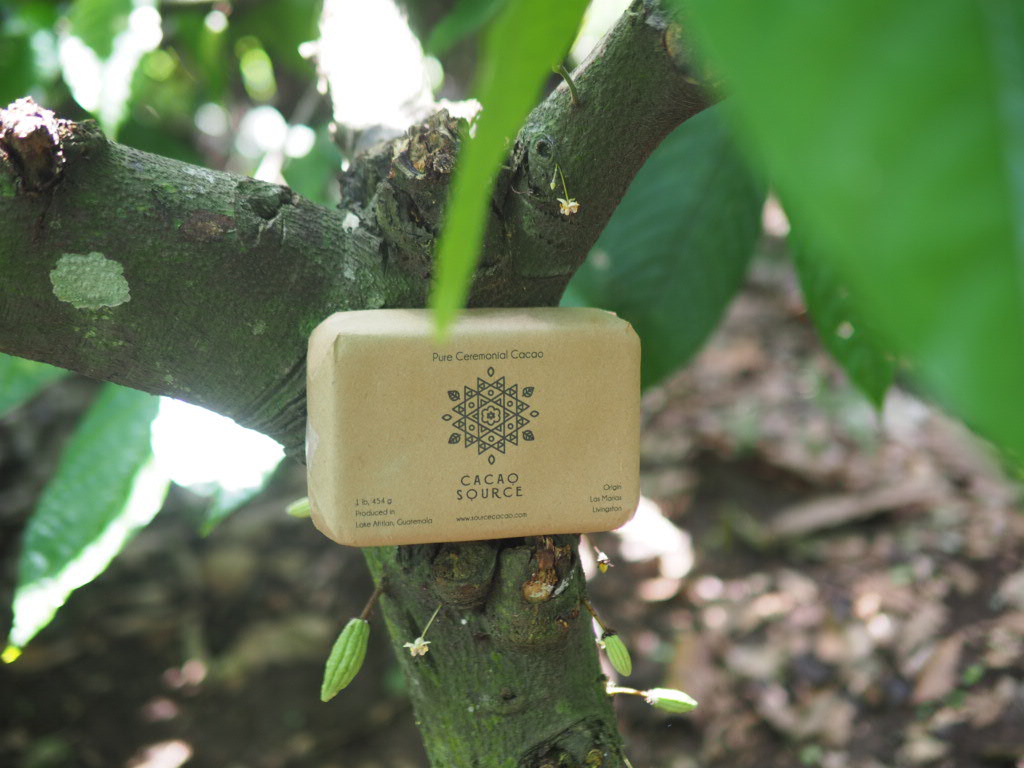One of our greatest passions and purposes at Cacao Source is the promotion of single-origin cacao. It’s the essence of our work. We believe that cacao from different lands carries a unique taste, energy, and story, and that when you consume it with essence, you connect with that land and its people.
We are also deeply committed to honoring the guardians of the land, the farmers, Indigenous women, and communities who make this cacao possible. When we share cacao in ceremonial settings, we emphasize gratitude, respect, and reciprocity. Acknowledging those who tend the cacao trees is a sacred part of the experience.
Since the beginning, we’ve shared our cacao transparently as single origin, whether from a specific family plot, a cooperative, or a finca. But this doesn't mean that every batch will always taste the same, and that’s wonderful news.
We felt this blog post was especially relevant, as community members often ask why their cacao—such as Entre Nubes—sometimes tastes more acidic/fruity or different from when they first tried it. One of the most common pieces of feedback we receive is about the changing flavors of our single-origin cacao.
There’s often an expectation that the cacao from Entre Nubes, or any of our origins, should always taste the same and stay within a fixed flavor profile. While we wholeheartedly wish to meet the desires of our community, at Cacao Source, our priority is to provide the most transparent, ethical, and unrefined cacao to support you in your spiritual and culinary journeys.
What Does “Single Origin” Mean?
When we say "single origin," we’re referring to cacao paste made from beans that come from a single source. That means we never mix cacao seeds from different locations. Each block of cacao you receive is traceable from its origin all the way to its packaging.
We currently work with eight unique origins within Guatemala. Each cacao is fermented and dried together in its region of origin before being sent to us. If you look at your cacao block, you’ll find its origin printed on the bottom right corner. On the back, you can also scan a code to learn more about its story and source.
Each origin varies in size and structure:
Some come from very small regions, including just one or two family farms.
Others are the result of collaborations among small-scale farmers living in the same area.
Two of our origins come from larger fincas—agroforestry farms that uphold strong environmental and social practices.
These variations in origin, fermentation, and seasonal factors all contribute to natural differences in flavor. Instead of seeing these changes as inconsistencies, we invite you to celebrate them as reflections of nature, climate, soil, and care—the essence of true single-origin cacao.

Cacao Isn’t Chocolate, and That’s the Point
Many people come to cacao with expectations shaped by the chocolate industry, where uniform flavor and consistency are the norm. In industrial chocolate, cacao is treated as a neutral bas, it's the sugar, milk, and flavorings that become the art.
But ceremonial cacao is not candy. It’s a living medicine, a plant ally, and a mirror of the Earth.
When you taste our cacao, you are tasting the land, and land is always changing. Rainfall, sun cycles, soil health, even the mood of the harvesters, all of it leaves an imprint. We’ve noticed a lack of education around this in the culinary world, where cacao is still too often viewed as a sugar vehicle rather than a sacred, seasonal food.
Cacao Is Closer to Wine Than We Think
Cacao, like wine, expresses its terroir, not just the country of origin, but the specific region, farm, and even microclimate where it was grown. The concept of terroir includes the soil, the weather, and the care of the growers. And just like wine, every harvest is different.
A wine from 2019 will taste different from one made in 2020, even if it comes from the same vineyard. The same goes for cacao. A batch harvested this year may be fruitier, earthier, or more bitter than last year’s, especially if the region experienced drought, excess rain, or shifts in biodiversity.

The Beauty of Change
We invite our community to embrace these variations as a reflection of nature, of real cacao, of something unrefined and alive. It's an invitation to let go of the supermarket mindset, of sameness and predictability, and instead welcome the unknown, the imperfect, the beautifully wild.
Even within Cacao Source, we sometimes find ourselves trying to “define” a cacao with taste palettes or set expectations for how it should taste. But cacao always reminds us: it shows up in its own way. Just as it's unhealthy to put expectations on loved ones, we shouldn’t do that with cacao either.
Instead, we can learn to love the medicine as it appears in the present moment. The best cacao is the one in front of you. Let it speak. Let it surprise you. Let it teach you.
Sure, some cacao’s expressions will speak to your heart more than others - and that’s okay. But part of what makes cacao so magical is that we can’t control it when it's kept close to its purest form. And that is something worth celebrating.

What Influences the Taste of Cacao?
Here are just a few of the natural, human, and ecological factors that shape each batch:
- Soil & Ecosystem Health – The nutrients and vitality of the land during the fruit’s growth cycle.
- Fermentation Process – Done outdoors in a non-controlled environment, fermentation varies with temperature, humidity, and timing.
- Drying Process – In smaller-scale operations, weather plays a huge role. If the sun doesn’t show up, drying slows and can shift the final flavor.
- Roasting – Our cacao is roasted by Kaqchikel women's collective leaders who work with intuition and skill, not machines. Each roast is slightly different, and we honor that humanness.
Why We Choose This Path
At Cacao Source, we’ve chosen a different path -one that steps away from chocolate capitalism to honor the true nature of cacao, the guardians of the land, and the women who co-create this medicine. In doing so, we’ve learned to let go of control, to celebrate difference, and to trust the multi-essence of cacao.
So next time you sip your cup of cacao, we invite you to taste its story. Remember the hands that prepared it, the Indigenous ways it carries, the Earth it came from and the beauty of its ever-changing form.

